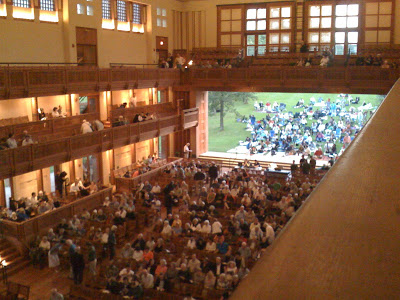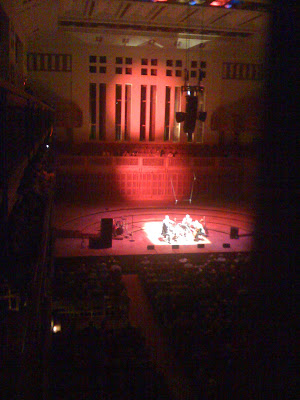Sigur Ros
Art Vent Letting the Fresh Air In
and you’re working on something good
but if it’s really good
you’re gonna need a bigger room
and when you’re in your bigger room
you might not know what to do
you might have to think about how you got started
sitting in your little room
Last night I watched “The White Stripes: Under Great White Northern Lights
White is also someone who’s thought a lot about the nature of creativity. His favorite quote about the band describes them as “simultaneously the most fake band in the world and the most real band in the world,” which made me think about how it’s the deft mixture of artifice and reality that makes for great art. Err too much on one side or the other and the magic is lost.
And White’s soliloquy on creativity was just the pep talk I needed before going into the studio:
It used to be, before I ever was on stage, there was the excitement of what it would be like to play onstage, or if I could just record… what would that be like? I don’t have inspirations like that anymore. Ten years later we’re just working in the same box….one part of my brain says I’m tired of trying to come up with things in this box, but I force myself because I know something good can come out of it if I really work inside of it
Inspiration and work ethic, they ride right next to each other. When I was an upholsterer… sometimes you’re not inspired to reupholster an old chair, sometimes its just work, but you do it because you’re supposed to and in the end you look at it and think “it’s pretty good” and you move on. That’s it. Not every day of your life are you going to wake up, the clouds are going to part, the rays from heaven are going come down and you’re going to write a song…sometimes you just have to force yourself to work, and maybe something good will come out of it. Whether we like it or not we write some songs and record them….book only 4 or 5 days in a studio and force yourself to record an album in that time…deadlines and things make you creative. But opportunity and telling yourself, oh, you’ve got all the time in the world, all the money in the world, you’ve got all the colors in the palette you want, anything you want— that just kills creativity. I’m using the same guitars onstage I used 10 years ago, and I like to do things to make it really hard for myself. For example, I don’t have picks all taped to my microphone stand. If I drop a pick, to get another I have to go all the way to the back of the stage. I place the organ just far enough away that I have to leap to get to it to play different parts of the song…. so I have to work harder to get somewhere. And there are hundreds of things like that…like those guitars I use that don’t stay in tune very well; they’re not conducive, not what regular bands go out and play. So I’m constantly fighting all these tiny little things because they build tension. There’s no set list when we play—that’s the biggest one—each show has its own life....when you go out and everything’s pre-planned and the table’s all set, nice and perfect, nothing’s going to happen; you’re going to go out and do this boring arena set….
All those things have always been a big component of The White Stripes: the constrictions…only having red, white and black colors on the art work and presentations, [sticking to] just guitar, drums and vocals, storytelling, melody and rhythm—these force us to create.
I was in Iceland all last night, in my dreams. Before going to sleep I watched Part II of Heima, the gorgeous Sigur Ros film (more like a long music video/travelogue) from 2007 (thanks to Roberto and NetFlix)—which I can’t believe I’d never seen, given how enamored I am of Sigur Ros and all things Icelandic. In 2004, on my way to an Olafur Eliasson exhibition in Oslo, I stopped for several days in Iceland for the sole purpose of driving alone in that surreal landscape while playing their music—which is so eerie and beautiful I can get weepy just listening to it on my iPod while riding Metro North. The idea may sound hokey, but it totally worked—except for when I was freaked out. My plan was to drive from Reykjavik up to Geyser, around the coast to Grindavik, and end up soaking in the milky, steaming mineral waters of the Blue Lagoon. I had a map that showed a road by the Arctic Sea, with numerous place names, which I assumed to be quaint little fishing villages. Instead the “road” turned out simply to be a driveway-like leveling of the gravel and the place names just that—places, perhaps inlets, someone had once named. I drove for hours in my rented Toyota (with its seemingly unlimited gas tank) without seeing any evidence of humans or habitation, the only road signs being those that said “Blindhead”—which meant that the narrow road I was on was about to go over a rise where I wouldn’t be able to see any vehicles that might be approaching from the other side. The prospect of a head-on collision was scary, but not as scary as it would have been if I’d actually seen another vehicle the whole time I was driving. I would come to the top of one of those hills, hoping to catch sight of a house, a barn, a fence—anything, off in the distance, a restaurant or gas station being too much to hope for—but each time there was only the endless empty ribbon of road, stretching on and on….

Somewhere in Iceland, 2004
The Kronos, like many contemporary musicians, make free use of pre-recorded audio, the only part that, for me, was disconcerting. I don’t mind sampling because it’s clear what it is, but I found it distracting to sit there and wonder what was live and what wasn't. This is one of the things I value in—and have learned from—the visual work of Robert Irwin and Olafur Eliasson, who make a point of keeping their means obvious so that the experience is the experience, and not marred by conjecture about how it’s done. One of my companions at the concert, Gregory, suggested that the Kronos might be better off having someone behind the computer up there on the stage with them, just to acknowledge the source of the sounds. But in general I don’t love the combination of canned music with live performance (even with dance)—it reminds me too much of lip-syncing (how about those Chinese?), or the violinists in the subway whose backup orchestra is a CD in a boombox.
The Kronos Quartet playing Sigur Ros:
Sigur Ros video Gobbledigook
I neglected to bring my camera, so Gregory took these pics of Ozawa hall with his iPhone:


